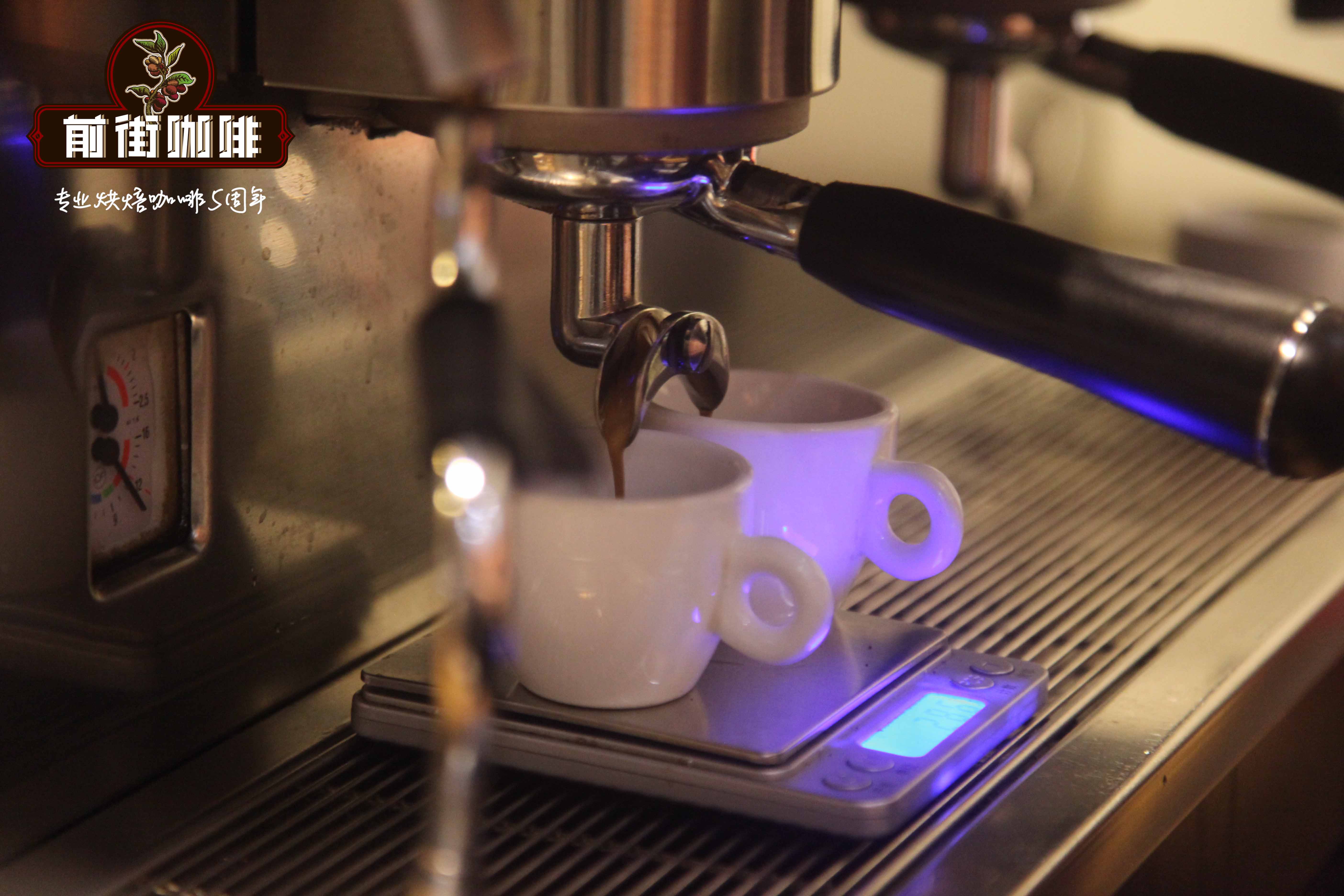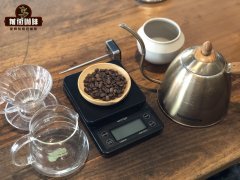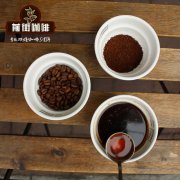How is the tiger spot of espresso caused? What are the manifestations of uneven Italian concentrated extraction?

We sometimes get a cup of coffee with both an over-extracted, burnt taste and an under-extracted, salty taste, possibly because of uneven extraction. Before understanding the uneven extraction of coffee, let's first understand how to judge the quality of a cup of espresso from the following aspects.
Judging by coffee flow rate
The flow rate of espresso coffee directly determines the taste of Espresso. Too fast flow rate will make the essence of coffee not dissolved in water, but the water has already passed through the coffee powder, resulting in a single taste but more refreshing, sour taste will be heavier; Too slow flow rate will make the essence and dross of coffee all melt into the water, resulting in coffee alcohol degree enhancement, taste more complex but at the same time bad miscellaneous taste will also be released, bitter taste will be heavier.
The speed of flow is a dynamic process, no coffee equipment can guarantee the consistency of coffee flow, even the weather humidity will affect the speed of flow, so baristas must know how to easily control the flow rate rather than being controlled by the flow rate.
grease thickness determination
The thickness of Espresso grease is a very complicated issue, far more complicated than the color of grease.
The thickness of the oil is generally related to the freshness of the beans. If the beans are too fresh, the extracted oil will be very thick. But the dissipation is also very fast, such oil we think is too rough, so the beans have an irreplaceable role in the formation of oil, only the correct beans can extract long-lasting oil. It is generally believed that one serving (1 ounce) of Espresso, oil more than 0.5 cm thick, accounting for about 2 minutes of oil, is a manifestation of high quality oil.
heterogeneous extraction
Uneven extraction is usually a combination of over-extraction and uneven extraction, the more common are: channeling effect (Channeling), side channeling effect (Side Channeling), Donut Extraction (or called Edge Channeling outer ring channel effect), etc.
Channel effect occurs at a certain point or block at the bottom of the filter cup, which is difficult for water to pass through. There may be many reasons, such as the inclusion of new and old powder after adjusting the scale of the bean grinder, uneven powder distribution, coffee powder agglomeration, etc.
If you use the bottomless handle, you can see that there are dark blocks and no liquid flow at the beginning of the extraction, sometimes due to excessive pressure, and there is a water jet-this phenomenon on the flavor can be large or small, depending on the scope and extent of the channel effect, the greater the case will produce bitter and other defective flavor.
The side channel effect is a very serious channel effect, usually caused by uneven pressure from left to right or front to back, and may also be caused by the flow bias of the brewing head. When using double handles to extract coffee, observe the extraction will find that one side of the coffee flow is too fast, the other side of the coffee flow is too slow, so the extracted coffee usually presents a bad flavor, all kinds of defects will be concentrated in this cup, such as burnt bitter, dry, sharp acid, salty and so on.
The doughnut extraction effect can only be seen through the bottomless handle, which is usually a phenomenon of faster extraction in the outer ring and significantly slower extraction in the center. As with the side channel effect, it usually produces various defective flavors; this phenomenon disappears after about 15 seconds of extraction, and the next coffee column seems normal, but the extraction is still slightly problematic. As the extraction proceeds to the middle stage, the coffee liquid in the outer ring becomes more and collects in the center, so the difference between the extraction of the center and the outer ring cannot be observed, but in fact, the uneven extraction continues.
This problem is usually caused by the fact that the coffee powder is compacted in the center and loose in the outer ring after filling, or the poor quality of the powder bowl itself and the uneven bottom. The size of the filler and the shape of the bottom play a key role in this problem.

Is tiger spot a sign of heterogeneous extraction?
Tiger spots are caused by fine powder extraction. Coarse grinding and fine grinding are easy to produce tiger spots, if the pressure is heavier, fine powder is easier to move down, it will cause dark tiger spots on the surface of crema, making crema look darker. The presence of tiger spots does not imply that the extraction was uneven.
Too much pressure is not only easy to bring out tiger spots, but also cause partial pressure. If it is double ESPRESSO extracted with double-headed powder bowl, you can compare whether the amount of two cups of espresso after extraction is consistent to judge whether the pressure is uniform and flat.
Important Notice :
前街咖啡 FrontStreet Coffee has moved to new addredd:
FrontStreet Coffee Address: 315,Donghua East Road,GuangZhou
Tel:020 38364473
- Prev

Hand brewing coffee step v60 filter cup hand brewing coffee step & hand brewing coffee precautions
Many people who came to the Qianjie cafe rushed into the door and sat in front of the bar and complained bitterly about why the hand was so difficult, why I couldn't make well, and why I brewed sour coffee so hard. In fact, it is not difficult to make coffee by hand! This time Qianjie Coffee will tell you about the steps and elements of hand-made coffee, quickly collect it or take a notebook to write it down. First of all, we need to prepare fresh coffee.
- Next

Why is coffee thirsty? What coffee quenches thirst? Can I drink coffee if my throat is uncomfortable?
When you are thirsty in hot weather, you want to drink iced coffee. This time, let's look at the recommended coffee for thirst. It is also important to avoid drinking too much iced coffee. Is coffee bad for moisturizing? The first thing you should know is that drinking coffee as a hydration is not very reasonable. Be careful not to drink too much iced coffee because of thirst, as it will produce the opposite.
Related
- Beginners will see the "Coffee pull flower" guide!
- What is the difference between ice blog purified milk and ordinary milk coffee?
- Why is the Philippines the largest producer of crops in Liberia?
- For coffee extraction, should the fine powder be retained?
- How does extracted espresso fill pressed powder? How much strength does it take to press the powder?
- How to make jasmine cold extract coffee? Is the jasmine + latte good?
- Will this little toy really make the coffee taste better? How does Lily Drip affect coffee extraction?
- Will the action of slapping the filter cup also affect coffee extraction?
- What's the difference between powder-to-water ratio and powder-to-liquid ratio?
- What is the Ethiopian local species? What does it have to do with Heirloom native species?

